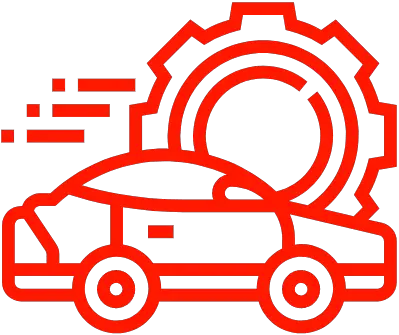How to Diagnose and Fix Low Oil Pressure When Hot
Low oil pressure when hot is a common issue experienced in many vehicles. This occurs when the oil pressure in the engine drops below the manufacturer’s specifications when the engine is running at high temperatures. The most common cause of this issue is a worn or defective oil pump, although other problems such as clogged filters, low oil levels, and faulty sensors can also be responsible. In order to determine the exact cause of this issue, it is important to have the vehicle inspected by a qualified mechanic. Possible solutions include replacing the oil pump or other components, flushing and changing the oil, and checking all associated sensors and wiring connections.
Low Oil Pressure in Hot Automobiles
Low oil pressure in hot automobiles is a common issue that can lead to engine damage and other serious issues. When oil pressure is too low, it can cause parts of the engine to overheat, leading to problems with performance and efficiency. In order to prevent this from happening, it is important to monitor oil levels regularly and repair any underlying issues that may be causing the low oil pressure.
Causes of Low Oil Pressure in Hot Automobiles
There are several common causes of low oil pressure in hot automobiles. These include improper oil level, clogged oil filter, faulty oil pump, and worn out bearings. Improper oil level can be caused by an inadequate amount of oil being added during maintenance or an insufficient amount being added during an oil change. Clogged or blocked filters can impede the flow of engine oil while a faulty pump can reduce the amount of pressure needed for proper lubrication. Worn out bearings will cause a decrease in the amount of pressure needed for proper operation as well as decreased fuel efficiency and increased exhaust smoke.
Symptoms of Low Oil Pressure in Hot Automobiles
The symptoms associated with low oil pressure when hot will vary from one car to another but some common signs include a check engine light coming on, a knocking noise emanating from the engine, decreased fuel efficiency, excessive exhaust smoke, and loss of power or slow acceleration. It is important to take note if any of these signs appear as this could indicate an underlying issue related to low oil pressure.
How to Diagnose Low Oil Pressure in Hot Automobiles
In order to diagnose low oil pressure when hot one must first check the dipstick for proper levels then inspect and replace the filter if clogged or blocked. Performance should then be tested with a pressure gauge before inspecting and replacing bearings if they are worn out or damaged. If all else fails you may need to replace the entire pump which requires professional assistance.
Tips to Avoid Low Oil Pressure in Hot Automobiles
In order to avoid low oil pressure when hot there are several steps one should take such as regularly checking and maintaining engine levels, replacing filters according to manufacturer recommendations, performing regular maintenance on their vehicle as recommended by their manufacturer, etc. Doing these things will help ensure that your vehicle remains running optimally and that any underlying issues are addressed quickly before they become more serious problems down the line.
Benefits of Avoiding Low Oil Pressure in Hot Automobiles
Avoiding low oil pressure when hot has many benefits including reduced risk of engine damage due to overheating as well as protecting moving parts from excessive wear and tear which can occur due to lack of lubrication caused by inadequate levels or poor performance from the pump itself. Additionally, properly monitored and maintained vehicles tend to last longer which saves money on repair costs over time!
How To Monitor Low Oil Pressure In Hot Automobiles
In order to monitor your vehicles’s low-oil-pressure-in-hot-automobile situation effectively it is important that you check your dipstick regularly for proper levels then inspect/replace any filters that may be clogged/blocked before having your pump checked for performance with a gauge (or replaced if necessary). Additionally regular maintenance should also be performed according to manufacturer’s recommendations so as not only maintain proper levels but also keep all components functioning properly so you don’t run into any unexpected issues down the line!
Introduction
Low oil pressure can be a major problem for your vehicle if it is running hot. It is essential to maintain the proper levels of oil pressure in hot automobiles to ensure that the engine runs smoothly and efficiently. In this article, we will discuss the warning signs of low oil pressure, solutions for low oil pressure, common mistakes to avoid when dealing with low oil pressure and precautions to take when dealing with low oil pressure.
Check Dipstick for Proper Level Before Starting Engine
Before starting the engine, it is important to check the dipstick for proper level. If the level is too low, this could indicate that there is a problem with the engine’s lubrication system or a lack of proper maintenance. To refill or change engine oils as per manufacturer recommendations, use the correct type and grade of motor oils as specified in your user manual.
Maintain Recommended Service Intervals as per Manufacturer Guidelines
It is essential to maintain recommended service intervals as per manufacturer guidelines in order to keep your vehicle running at its optimal performance level. Regular servicing such as changing filters, inspecting parts and replacing them when needed will help reduce wear and tear on your vehicle and help prevent problems such as low oil pressure from occurring.
Warning Signs of Low Oil Pressure in Hot Automobiles
It is important to be aware of the warning signs of low oil pressure in hot automobiles so that you can take action before it becomes a major problem. The most common warning signs include a high temperature reading on the dashboard gauge, unusual noises coming from the engine compartment, decreased fuel efficiency and loss of power/slow acceleration.
Solutions for Low Oil Pressure in Hot Automobiles
If you have identified any warning signs of low oil pressure in hot automobiles, there are several solutions that can help restore normal levels. The first step should be to refill or change engine oils as per manufacturer recommendations using the correct type/grade of motor oils specified by your user manual. This will ensure that lubrication levels are sufficient for normal operation. Additionally, you may need to replace blocked or clogged filters with new ones and test performance of the pump with a pressure gauge if necessary. Lastly, inspect and replace bearings if they are worn out or damaged due to excessive wear over time.
Common Mistakes while Dealing with Low Oil Pressure in Hot Automobiles
When dealing with low oil pressure in hot automobiles it is important to avoid making common mistakes such as not checking dipstick before starting an engine or using wrong type/grade of motor oils which may not be suitable for your vehicle’s lubrication system requirements. Additionally, ignoring warning signs from dashboard gauges can lead to serious problems which could result in costly repairs down the line.
Precautions While Dealing with Low Oil Pressure in Hot Automobiles
When dealing with low oil pressure in hot automobiles it is important to take certain precautions such as wearing protective gear during inspections and carefully following instructions on user manuals provided by manufacturers which contain information about servicing intervals and types/grades of motor oils that should be used according to specific requirements. Additionally, if you are unsure about what needs to be done it might be best to take mechanical assistance from a qualified technician who has experience working on similar vehicles.
FAQ & Answers
Q: What are the Symptoms of Low Oil Pressure in Hot Automobiles?
A: The symptoms of low oil pressure in hot automobiles may include a check engine light on, knocking noise from the engine, decreased fuel efficiency, excessive exhaust smoke, and loss of power/slow acceleration.
Q: What are the Tips to Avoid Low Oil Pressure in Hot Automobiles?
A: To avoid low oil pressure in hot automobiles, it is important to regularly check and maintain the engine oil level, replace the oil filter according to manufacturer’s recommendations, and perform regular maintenance of the vehicle as recommended by the manufacturer.
Q: What are the Benefits of Avoiding Low Oil Pressure in Hot Automobiles?
A: The benefits of avoiding low oil pressure in hot automobiles include reduced risk of engine damage due to overheating and protection of moving parts from excess wear and tear.
Q: How to Monitor Low Oil Pressure in Hot Automobiles?
A: To monitor low oil pressure in hot automobiles, it is important to check the dipstick for proper level before starting the engine, maintain recommended service intervals as per manufacturer guidelines, and inspect and replace parts as needed during maintenance schedule.
Q: What are Some Common Mistakes while Dealing with Low Oil Pressure in Hot Automobiles?
A: Some common mistakes while dealing with low oil pressure in hot automobiles include not checking dipstick before starting engine, using wrong type/grade of motor oils, and ignoring warning signs from dashboard gauges.
In conclusion, low oil pressure when hot can be caused by many different factors. It is important to pay attention to the oil levels in your vehicle and to have regular maintenance done to ensure that your car is running correctly. Low oil pressure when hot could potentially lead to engine failure and more serious problems if not addressed quickly. Therefore, it is important to have any issues with low oil pressure investigated immediately by a qualified mechanic.
Author Profile

-
With more than 30 years in the bicycle industry, I have a strong background in bicycle retailing, sales, marketing and customer service. I have a passion for cycling and a dedication to excellence. As a manager, I worked diligently to increase my capabilities and responsibilities, managing up to eleven mechanics (at Palo Alto Bicycles) and later as a working partner in my own store.
As the shop owner of Spoke n’ Word Cycles in Socorro, NM, the success of the mission was my responsibility, which I pursued passionately since we opened in 2003 through the spring of 2011. I am adept at managing owned and loan inventory, preparing weekly & annual inventory statements, and managing staff. The role as managing partner also allowed me tremendous freedom. I used this personal freedom to become more deeply involved in my own advancement as a mechanic, to spearhead local trail building, and advocating for cycling both locally and regionally.
As a mechanic, I have several years doing neutral support, experience as a team mechanic, and experience supporting local rides, races, club events. I consistently strive to ensure that bicycles function flawlessly by foreseeing issues and working with the riders, soigners, coaches and other mechanics. Even with decades of experience as a shop mechanic and team mechanic, and continue to pursue greater involvement in this sport as a US Pro Mechanic, and UCI Pro Mechanic.
Latest entries
- July 26, 2023BodyFind the Best Grill for Your 2007 Toyota Tacoma – A Complete Guide
- July 26, 2023BodyUpgrade Your Ford Escape with the Best 2008 Grill – Here’s How!
- July 26, 2023Bumper Stickers, Decals And MagnetsBest Chevy 1500 Door Emblem: Upgrade Your Truck with a Stylish Emblem
- July 26, 2023Marker Light AssembliesGive Your 2008 Dodge Dakota a Makeover with the Best Grill Upgrade
